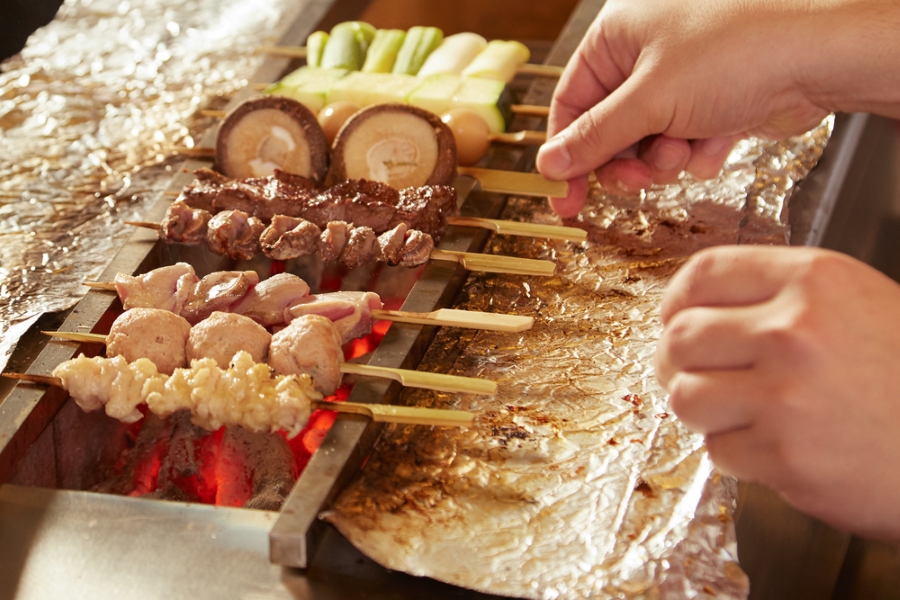Contents:
- What is Yakitori?
- 10 Best Yakitori Restaurant in the U.S.
- What’s on the menu? (10 Most Popular Yakitori Menus)
What is Yakitori?
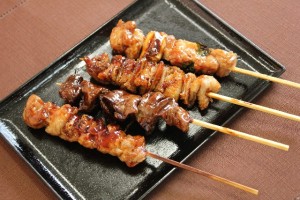
Yakitori is a relatively new term for the non-Japanese, but the yakitori culture dates back to early tenth century Japan where there is mention of “grilled chicken” as festive menu for royalty. In 1682, a cook book mentioned how to make yakitori as well, with the following directions: “Put chicken meat on skewers, sprinkle some salt and grill them, then dip it in a jar of tare. Eat before tare dries out.” Meats were still a relative luxury in Japan at that time, so it wasn’t until the 1930s that yakitori had become a common culinary dish.
10 Best Yakitori Restaurant in the U.S.
Ready to go try yakitori? Here are 10 best yakitori restaurants in the States.
- Torishin (New York)
- Yakitori Totto (New York)
- Yakitori Taisho (New York)
- Yakitori Boogytori (Illinois)
- Teppo Yakitori and Sushi Bar (Texas)
- Torimatsu (Los Angeles)
- Shin-Sen-Gumi (Los Angeles)
- Yakitori Kokko (San Francisco – Bay Area)
- Hina Yakitori (San Francisco – Bay Area)
- Yataimura Maru by Shigezo (Portland)
1. Torishin
New York
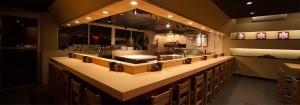
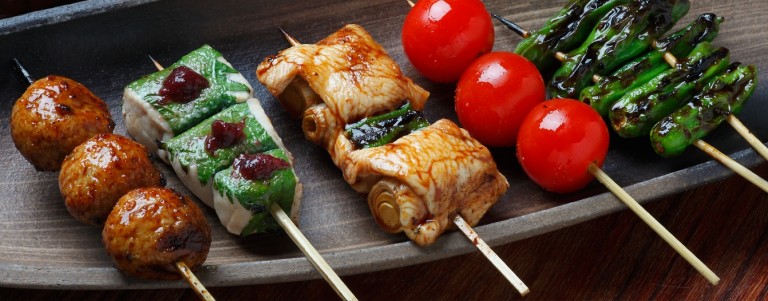
What to order:
You can order a la carte, but there aren’t many yakitori restaurants in the United States offering omakase menu, so why not order one? Omakase covers many varieties of meat, plus refreshing housemade dessert.
2. Yakitori Totto
New York
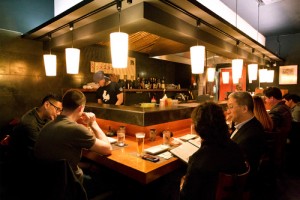
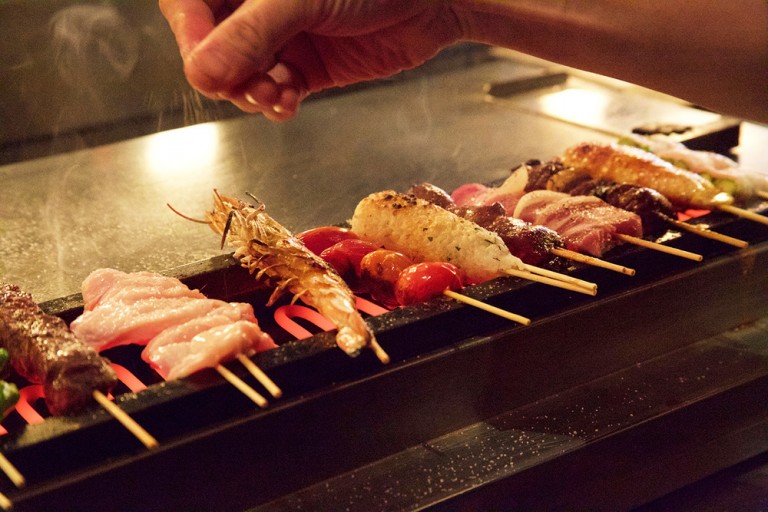
What to order:
Other than the usual suspects of negima and tebasaki wings, order shishito tsukune, which is two popular items in one. Ground chicken (tskune) is stuffed in shishito pepper and then grilled. If you are adventurous, and have early reservations, try some of their limited items. Hiza Nanakotsu (soft knee bone), bonchiri (tail) and hatsu (heart) are especially popular with Japanese expats. Totto also serves a special breed of pork that is both juicy and sweet.
3. Yakitori Taisho
New York
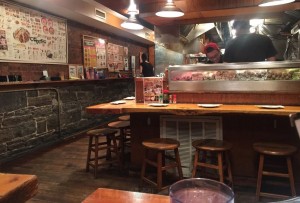
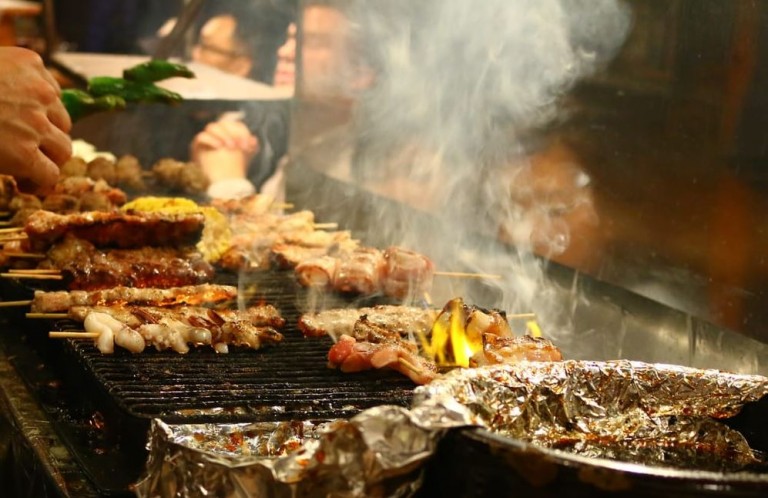
What to order:
One yakitori stick starts around $1.50, so go crazy and order everything you want… If that’s not your style, get the set of 10 skewers so you can sample a variety of yakitori.
4. Yakitori Boogytori
Illinois
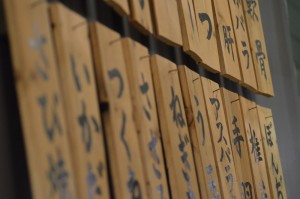
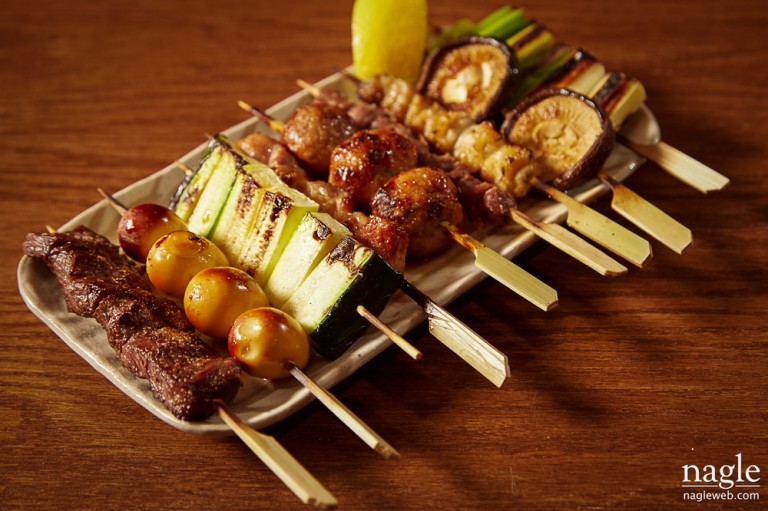
What to order:
Chicken paitan ramen is creamy and delicious, and Osaka shio ramen has both chicken and tonkotsu broth made from Berkshire pork and jidori chicken. They are the perfect ending after skewers and skewers of yakitori. Feeling adventurous? Order shishamo, sun-dried smelt fish. The whole fish is on a skewer and grilled and you can eat the whole thing, including its head. The eggs inside of this fish are a favorite treat for many Japanese.
5. Teppo Yakitori and Sushi Bar
Texas
In Texas, where meat is a way of life, it’s not easy to please people when it is prepared in a foreign style; especially when the meat is presented on a dainty stick. Teppo opened in 1995, and has been serving yakitori ever since. Judging from the long wait, it seems that after two decades, Texans have approved, as Teppo’s yakitori is loved by locals. Chef/Owner Masayuki Otaka, who bought Teppo from the original owner in 2008, makes sure to maintain his high quality standards every day. Who would have thought that true Yakitori could be found in the heart of Texas? Just one more reason to visit the Lone Star State.
What to order:
Chicken meatballs with quail egg yolk for dipping and Texas quail seem to be local favorites.
6. Torimatsu
Los Angeles
You may notice that some Japanese restaurants specialize in one thing and do it really well. In Torimatsu’s case, their speciality is Yakitori, a.k.a. bite size chicken meat on sticks. Tebasaki (wings), tsukune (meatballs), sasami (breasts) and negi-niku (thigh and green onion) are great for everybody, and if you are truly adventurous, try bonchichi (tail) or sunagimo (giblets). They are all grilled over special charcoal called “binchotan,” which burns like an infrared ray, bringing a juicy and tender result. It’s a small restaurant, so make sure to call ahead, as it’s well worth a trip to Gardena.
What to order:
Their set menu comes with either 7 or 10 grilled chicken and veggie sticks and it’s a great way experience their yakitori. They’ll ask if you prefer tare or shio on yakitori. Tare is sweet soy (similar to teriyaki sauce), and shio is salt. It’s up to you, but breasts work well with shio and tsukune is great with tare. Whatever you do, don’t expect sushi or ramen on the menu.
7. Shin-Sen-Gumi
Los Angeles
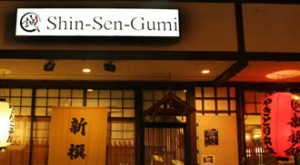
Note: Not all Shin-Sen-Gumi serve yakitori, so please check with your specific location.
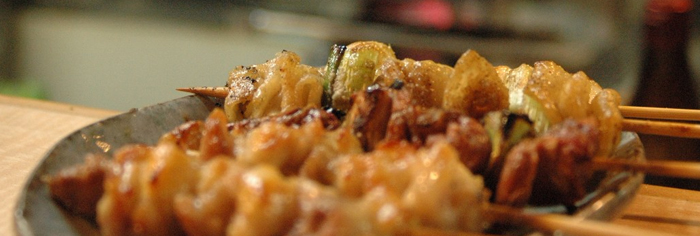
What to order:
Negima (thigh meat with scallions) are available either with salt or with sweet tare. Get both to see which one you like.
8. Yakitori Kokko
San Francisco – Bay Area
Unless you like to wait on line for 2 hours, don’t show up on the weekend without a reservation. The Bay Area features many izakaya restaurants, but not a lot specialize in yakitori, so people from Silicon Valley and families who live in this affluent area flood to Kokko for their fix of this grilled chicken treat. Since most of the skewers are under $3, it’s perfect for students as well. Just like other great yakitori restaurants, Kokko uses “binchotan,” a unique charcoal that creates magical bites where the inside is nice and juicy while the outside is perfectly crisp.
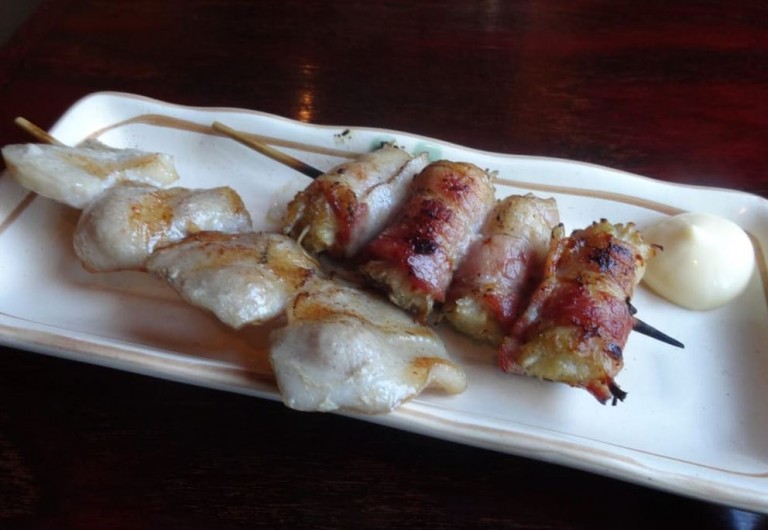
What to order:
Thighs and chicken skin are always a great idea, but try the quail egg with bacon. It’s like an American breakfast on a stick. If you’re looking for something a bit more filling, try soboro gohan, seasoned ground chicken over rice and thank me later.
9. Hina Yakitori
San Francisco – Bay Area
A former DJ grilling yakitori in Oakland? Sounds like a Jon Favreau movie plot, doesn’t it? But it’s all true. Tommy Cleary, co-owner of Hina Yakitori, started his yakitori career by accident, but made sure that his yakitori is the best. Unlike other yakitori restaurants, Hina’s menu is rather small, but each meat is cut, grilled and served with intention. Boring breast meat will turn into a pleasure filled bite after Cleary prepares it, as the first bite of breast is always the juicy part of the chicken’s underarm. Each piece of meat is prepared with the similar precision. The team at Hina Yakitori breaks down a limited number of French bred chicken, poulet rouge, from Pitman Farms everyday. Hina Yakitori is on Michelin Guide’s recommended list.
What to order:
You must order the most succulent part of chicken, “Sori Maki,” thigh oyster. Only a limited number of them are available each night.
10. Yataimura Maru by Shigezo
Portland
Yataimura means food cart village in Japanese. There are many areas in Japan where at night, food vendors show up serving food and alcohol. Yataimura Maru in Portland is trying to create this same festive atmosphere in a restaurant. So, while technically, Maru is not a “Yakitori” restaurant, they serve many things, and there’s even a robata counter where you can sit and order your favorite yakitori!
What to order:
Definitely try thighs, tsukune and everything bacon wrapped. Also sample the grilled rice balls, yakionigiri and Karaage, (Japanese fried chicken). Both are crowd pleasers among Japanese people. Yakionigiri is grilled over robata along with your yakitori order. The charred sweet tare taste complements the delicious crunchy outside and soft inside.
*All prices, numbers and menu descriptions mentioned in the article are from the time of this article’s publishing. So keep in mind, they may have changed since then.
What’s on the menu? (10 Most Popular Yakitori Menus)
*Photo Credit: Shin-Sen-Gumi (http://www.shinsengumigroup.com/en/dining-guide/yakitori.php)
If you have been to a yakitori shop, you’ve most likely seen chicken parts that you’ve never heard of. Yes, there are chicken breasts and wings on the menu but regulars at the bar might order “sunagimo” and “nankotsu” which might make you feel left out. Don’t worry; here’s a list of the 10 most popular yakitori items that include these unusual parts.
Momo
That juicy, flavorful part of the chicken… thighs! Momo i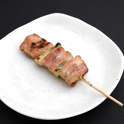 That juicy, flavorful part of the chicken… thighs! Momo is the king of yakitori, and it’s everybody’s favorite, from kids to salarymen to grandparents. Chicken thighs with or without skin are often grilled with tare.
That juicy, flavorful part of the chicken… thighs! Momo is the king of yakitori, and it’s everybody’s favorite, from kids to salarymen to grandparents. Chicken thighs with or without skin are often grilled with tare.
Negima
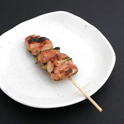 Tokyo scallions and chicken meat (often thighs or breasts meat) are alternatively skewered. The charred scallion smells great and the sweetness of the scallion compliments the juicy chicken.
Tokyo scallions and chicken meat (often thighs or breasts meat) are alternatively skewered. The charred scallion smells great and the sweetness of the scallion compliments the juicy chicken.
Tsukune
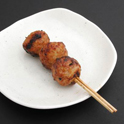 Meatballs! It’s a popular dish with kids and women. The sugar in tare makes the surface of the meatball crisply charred, while the inside retains its juiciness. Sometimes there’s cheese inside of the meatball, or it comes with yolk as dipping sauce.
Meatballs! It’s a popular dish with kids and women. The sugar in tare makes the surface of the meatball crisply charred, while the inside retains its juiciness. Sometimes there’s cheese inside of the meatball, or it comes with yolk as dipping sauce.
Torikawa
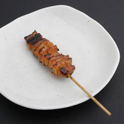 What’s better than perfectly crisped chicken skin in sweet yakitori sauce? We can’t think of anything.
What’s better than perfectly crisped chicken skin in sweet yakitori sauce? We can’t think of anything.
Nankotsu
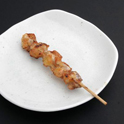 Cartilage, yes, the part you throw away without any care, is a popular item at the yakitori shop. Do you remember last time you were eating BBQ ribs and ate the white soft bone on the end? Nankotsu texture resembles that.
Cartilage, yes, the part you throw away without any care, is a popular item at the yakitori shop. Do you remember last time you were eating BBQ ribs and ate the white soft bone on the end? Nankotsu texture resembles that.
Tebasaki
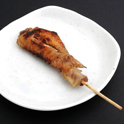 Two words. Chicken wings. Tare or salt, your choice.
Two words. Chicken wings. Tare or salt, your choice.
Sunagimo
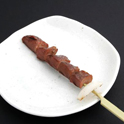 It’s chicken gizzard. Ironically, it doesn’t taste like chicken, but people enjoy its lean, firm and crispy texture.
It’s chicken gizzard. Ironically, it doesn’t taste like chicken, but people enjoy its lean, firm and crispy texture.
Reba
 Not the queen of country music, but rather, chicken liver, pronounce “rebah.”
Not the queen of country music, but rather, chicken liver, pronounce “rebah.”
Gyutan
Gyu (beef) + tan (tongue). It’s one of the leanest parts of the meat. Try it and you’ll instantly know why it’s so popular.
Shishito
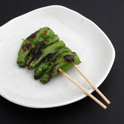 Shishito peppers have become popular appetizers in the United States. Yakitori style shishito is equally as good with the added plus of getting your daily dose of greens.
Shishito peppers have become popular appetizers in the United States. Yakitori style shishito is equally as good with the added plus of getting your daily dose of greens.
